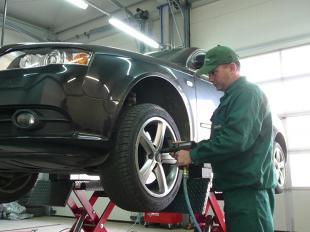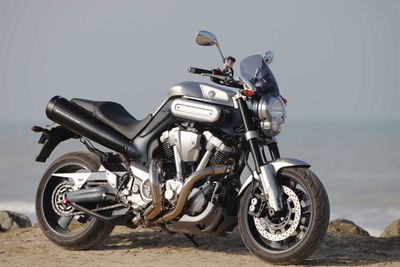
Replacing summer tires - The ABC of proper wheel assembly
Content
- 1. Check the rolling direction of summer tires.
- See also: Summer tires - when to install and what tread to choose?
- 2. Carefully tighten the wheel bolts.
- 3. Don't forget to grease the bolts
- See also: All-season tires - apparent savings, increased risk of an accident
- 4. Don't Skip Wheel Balancing Even If You Don't Swap Tires
 Mistakes when changing tires and rims can have serious consequences. We remind you what you need to remember when installing summer tires. Sometimes it pays to look at the hands of a mechanic.
Mistakes when changing tires and rims can have serious consequences. We remind you what you need to remember when installing summer tires. Sometimes it pays to look at the hands of a mechanic.

Vulcanizing shops across the country are under siege. High air temperatures reminded drivers of the need to replace car tires with summer ones. In a professional workshop, you can not worry about the quality of service. But when assembling the wheels yourself or with an inexperienced locksmith, it is easy to make a mistake, which will result, at best, in problems with unscrewing the wheels after the season. The worst-case scenario is when a wheel comes off while driving and a serious accident occurs. That is why it is worth watching the work of mechanics changing tires and wheels in our car.
We are talking with Andrzej Wilczynski, an experienced vulcanizer, about how to set the wheels correctly.
1. Check the rolling direction of summer tires.
When installing tires, refer to the marking indicating the correct direction of rolling and to the outside of the tire, which is especially important in the case of directional and asymmetric tires. Tires must be installed in accordance with the arrow stamped on the side of the tire marked "Outside/Inside". Only a properly installed tire will provide adequate traction, proper water drainage and good braking. A tire that is installed incorrectly wears out faster and runs louder. It also won't provide a good grip. Mounting method does not matter only for symmetrical tires, in which the tread pattern is identical on both sides.
See also: Summer tires - when to install and what tread to choose?
2. Carefully tighten the wheel bolts.
You also need to tighten the screws correctly. The wheels are subject to high overloads, so if they are tightened too loosely, they can come off while driving. Also, don't twist them too tight. After the season, stuck caps may not come off. In such situations, bolts are often drilled out, and sometimes they end up replacing the hub and bearing.
To tighten it, you need to use a wrench of a suitable size, too large can damage the nuts. In order not to twist the thread, it is best to use a torque wrench. In the case of small and medium passenger cars, it is recommended to set the torque wrench at 90-120 Nm. Approximately 120-160 Nm for SUVs and SUVs and 160-200 Nm for buses and vans.
Finally, it is worth checking that all screws are tight.
ADVERTISING
3. Don't forget to grease the bolts
To avoid problems with unscrewing screws or studs, they should be lightly lubricated with graphite or copper grease before they are tightened. You can also put it on the edge of the hub - on the surface of contact with the rim. This will make it easier to install and remove a wheel with a narrow bore.
See also: All-season tires - apparent savings, increased risk of an accident
4. Don't Skip Wheel Balancing Even If You Don't Swap Tires
Even if you have two sets of wheels and do not need to change tires to rims before the start of the season, be sure to balance the wheels. Tires and rims deform over time and stop rolling evenly. Balancing a set of wheels costs only PLN 40. Before assembling, always check that everything is in order on the balancer. Well-balanced wheels provide comfortable driving, low fuel consumption and even tire wear.
Governorate Bartosz
photo by Bartosz Guberna

